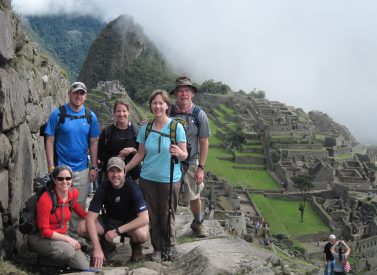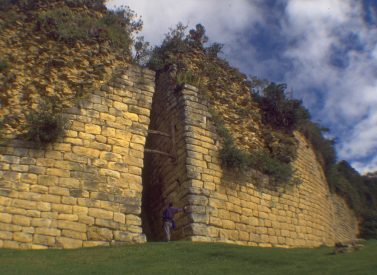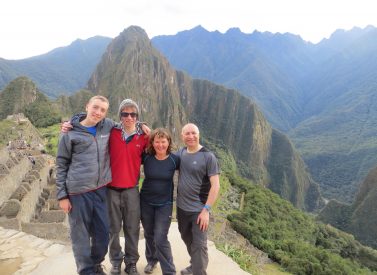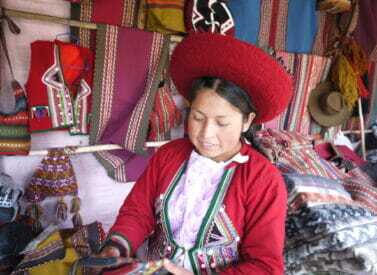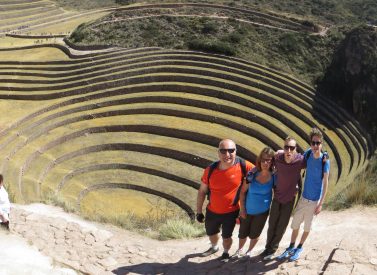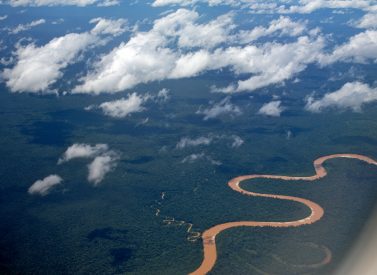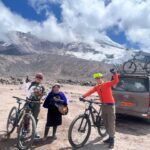Know Before You Go: Our Top Tips for Holidays to Peru
 by Tom Shearman on 23rd January, 2019
by Tom Shearman on 23rd January, 2019
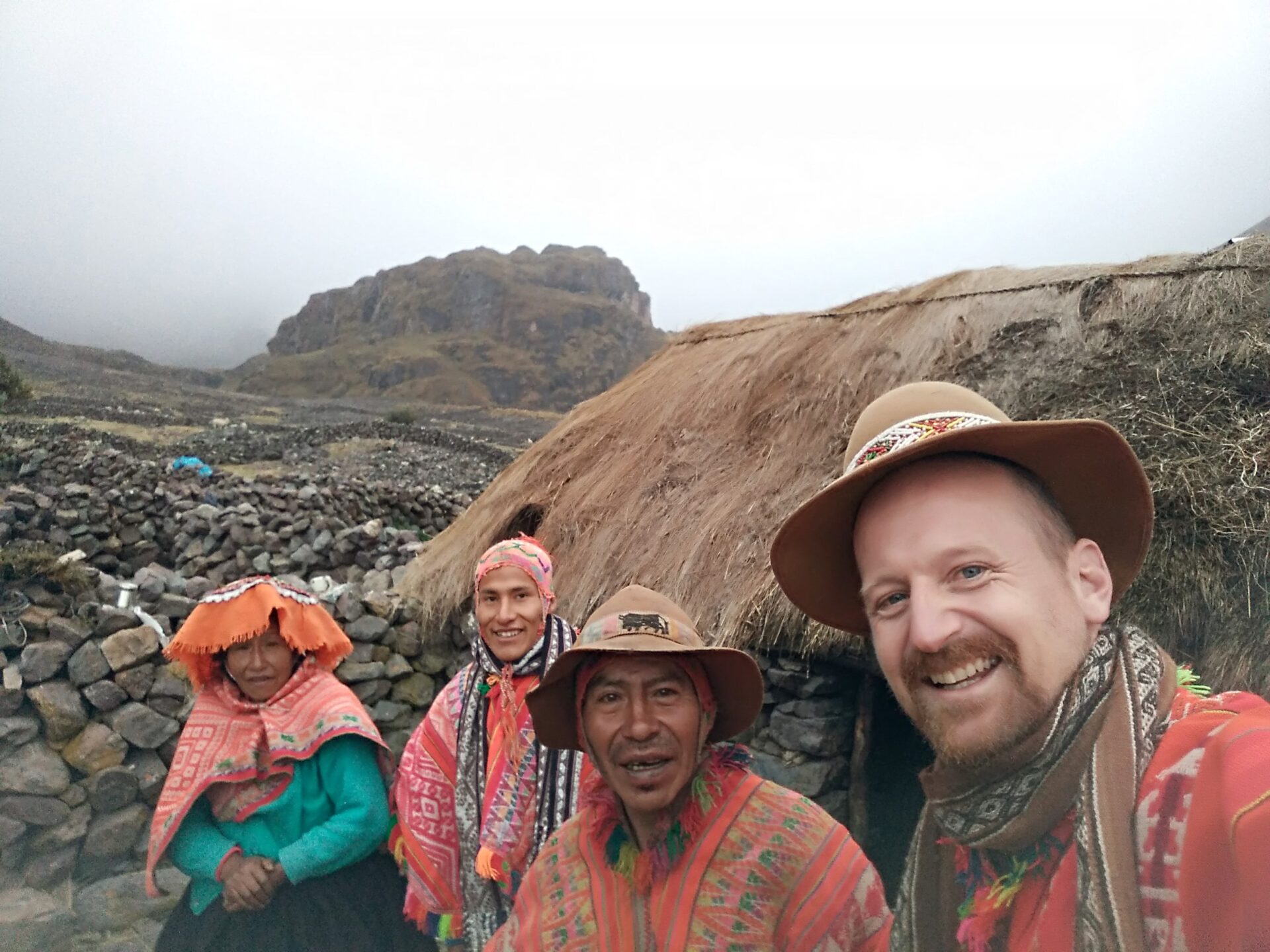
Thinking about a holiday in Peru?
Andean Trails’ Peru travel expert Tom Shearman has visited Peru more than 10 times and shares his top travel tips and what to know before you go.

Sacred Valley near Cuzco
When to go
The best months for hiking, highlands and jungle are in the dry season – May to October – although April and November can still be good.
The rainy season (Nov-March) means cheaper flights and fewer visitors (Christmas notwithstanding)- in general, the mornings are clear and warm, but the cloud gather during the day and rain can come in the afternoons.
Read more in Peru weather and seasons blog.

Chopiqalqui Ridge
Staying healthy
Sun – Don’t underestimate the strength of the sun’s UV rays, especially at altitude. Wear a broad-brimmed sunhat and plenty of factor 30-50 sun cream at all times.
Water – drink plenty of water, especially at altitude (see below for more on altitude) and in the hear and humidity of the Amazon. Drink bottled, treated or previously boiled water as public water, although chlorinated and relatively safe, may cause mild stomach upset (NB Treated or boiled water is better as less waste is produced).
Read our blog about safe drinking water in Peru.
Food – Avoid eating from street vendors unless you can see that food is freshly cooked, untouched and served on clean dishes. Avoid salads, unless you expressly know that everything has been washed with treated water. Tourist restaurants/hotels usually do, but you must check.

Food in Peru
Altitude/coca leaves
Rest for a few hours on arrival at altitude and take it easy for the first couple of days.
You may feel fine on arrival and tempted to carry on as normal. Don’t be fooled: you might be benefiting from oxygen brought in your blood from sea level.
Drink plenty of water to avoid dehydration (altitude is a diuretic). Do try Coca tea (mate de coca) to help alleviate symptoms, it’s quite bitter but once you get used to the taste, it’s a great aid.
Eat light meals, dine early, allowing time for digestion time and minimise consumption of cigarettes and alcohol. Avoid sleeping pills.
If you are preparing for a trek, check our tips for preparing for the Inca Trail.

High up in the Andes, Rainbow Mountain
Food and drinks
Peru enjoys an incredible variety of fruit and vegetables and there are a wide range of regional specialities and distinct cuisines. Vegetarians are also well catered for in Peru.
The coast has many excellent, sophisticated dishes, especially seafood and shellfish.
Andean cuisine, although less varied and sophisticated, can be delicious. Typical Andean dishes include: cuy (guinea pig) and chicharron de chancho (deep fried pork).
Check our guide to Cusco’s top restaurants to get the taste buds salivating.

Camp food
Currency
Peru’s monetary unit is the “Nuevo Sol” (S/.) and most of your transactions will be in Soles.
ATM debit/credit cards are now widely used in major restaurants, hotels and shops (with fees), and there are ATM (‘hole-in-the-wall’) machines widely available in towns and cities. You can choose to withdraw Soles or USD at many – Soles are much more useful.
US dollars are often accepted, too, if they are small denomination, unmarked and undamaged bills. I usually advise people to arrive with USD 100 per person, in total, as a back-up, in case ATMs don’t work /cards get blocked.
When changing money, don’t change with street changers (cambistas). Use a bank or casa de cambio (bureau de change). Ask for ‘billetes chicos’ (small notes, i.e. 10 or 20 sol notes) as obtaining change outside towns and cities can be difficult. Count your soles carefully before handing over your US dollars, and look out for forged notes.

Market in Urubamba
Tipping
Tipping is a normal part of life in Peru, from restaurant staff (+10% of bill) to local guides to porters.
Local staff, e.g. on trekking, biking, jungle and rafting expeditions, often look to group members for recognition of their services.
The tip will depend on satisfaction with service provided and length of time spent with staff.
A range of US$5-10 per day for the guide is usual plus further tipping for drivers, assistants cooks etc, paid in Peruvian Soles.
Over tipping can be counter productive, too, so we advise to keep to the guidelines.
Read our tipping blog for more.

Cook and guide, Felippe and Severino
Visas
All travellers need a valid passport with at least 6 months remaining validity.
British nationals do not need a visa for Peru. Fill in a 90-day tourist visa on arrival, and keep the tourist card with you to show at check-in at hotels and for when you leave the country.
Non-UK citizens are advised to contact their Embassy for up-to-date visa advice.

Machu Picchu
Malaria and Yellow Fever
A Yellow Fever vaccination and malaria pills are required if you travel to the Amazon basin.
Yellow Fever inoculations take 10-14 days to be effective, so plan in advance.

Peruvian Amazon
Haggle
Peru is full of wonderful souvenirs from ceramics to alpaca wool and more.
Most vendors will be happy to engage in some playful haggling – prices for tourists usually start high so go back low – but only start haggling if you really mean to buy the item.
If you are not interested, a firm but friendly ‘No gracias’ is best.

Market in Pisac
Toilet roll in the bin
Peru’s sewage system and pipes are built to remove human waste only. That bin next to every lavatory is to put ALL toilet paper in.
It takes some getting used to but is the norm from a basic café to a top end hotel. You’ll soon get used to it, and it’s much preferable to a blocked toilet returning your … enough said!

Community tourism
Getting around
Peru is well served by airports with several daily flights to many major towns and cities.
There are some excellent bus services (Cruz del Sur, for example) as well as many not so good, cheap and local ones (which we advise to avoid). In very rural areas, sporadic buses may be the only way around.
Trains are few and far between and tend to be expensive and running tourist routes to Machu Picchu / Lake Titicaca. They pass some spectacular scenery and can be a very special way to arrive at your next destination.

Train
Peruvian timings
Not everything runs completely on time in Peru, or indeed much of South America. This is also part of its charm. Buses, guides, people, trains – they and more can all seem to run on a different timetable to what some of us expect in our own countries.
The best advice is, although it can be frustrating, try to relax into it – you are on holiday – and see the world from a different time perspective.

Time stands still, Salkantay trek
Safety tips
Almost all trips to Peru are trouble free, but, like anywhere, tourists need to take precautions so as not to fall victim to crime.
- Leave paper valuables in hotel safe (caja fuerte), taking only what you need for the day. Carry a copy of passport (leave original in safe). When travelling, carry paper valuables in a money belt under clothing, not in a ‘bum-bag’.
- In Miraflores (Lima), be suspicious of ‘overly-friendly’ locals or ‘tourists’ who might be con-men/women. Also, avoid the beach areas off-season. During the Dec-April beach season, beware bag-snatchers on the beach.
- We suggest you do not exchange money on the street. Use either a casa de cambio (bureau de change) or bank, ATM machine.
- More care is needed in downtown Lima. Only take a daypack if you’re in a group. We suggest you carry this on your chest. Carry camera in bag, replacing after use. If alone, you’re advised to avoid downtown Lima at night.
- In Lima, as elsewhere in Peru, always take special care in markets and busy streets. Great care is needed in the markets and bus offices of central Lima, the San Camilo market in Arequipa and Cusco’s San Pedro market. Never carry a bag or valuables in these areas, as bag-slashers, watch snatchers and pickpockets operate. Beware of distraction techniques.
- At night, avoid quiet streets or streets with poor lighting, especially if alone; it’s best to use taxis at night, wherever you are.
- NEVER leave your bags unattended, especially in airports, bus terminals and hotel lobbies.

Shore in Lima
The secret top tip
Take twice as much money and half the amount of clothes you think you need.
There are an abundance of markets to buy clothing should you need, as well as launderettes.
You only need one upmarket change of clothes if you plan a blowout at a top restaurant.
You’ll feel the benefit of a lighter backpack, and also have plenty of free space for souvenirs!

Inka ruin house, Lares trek
Contact us for more about Peru.
Share


 a Group Tour
a Group Tour  a Tailor Made Tour
a Tailor Made Tour 